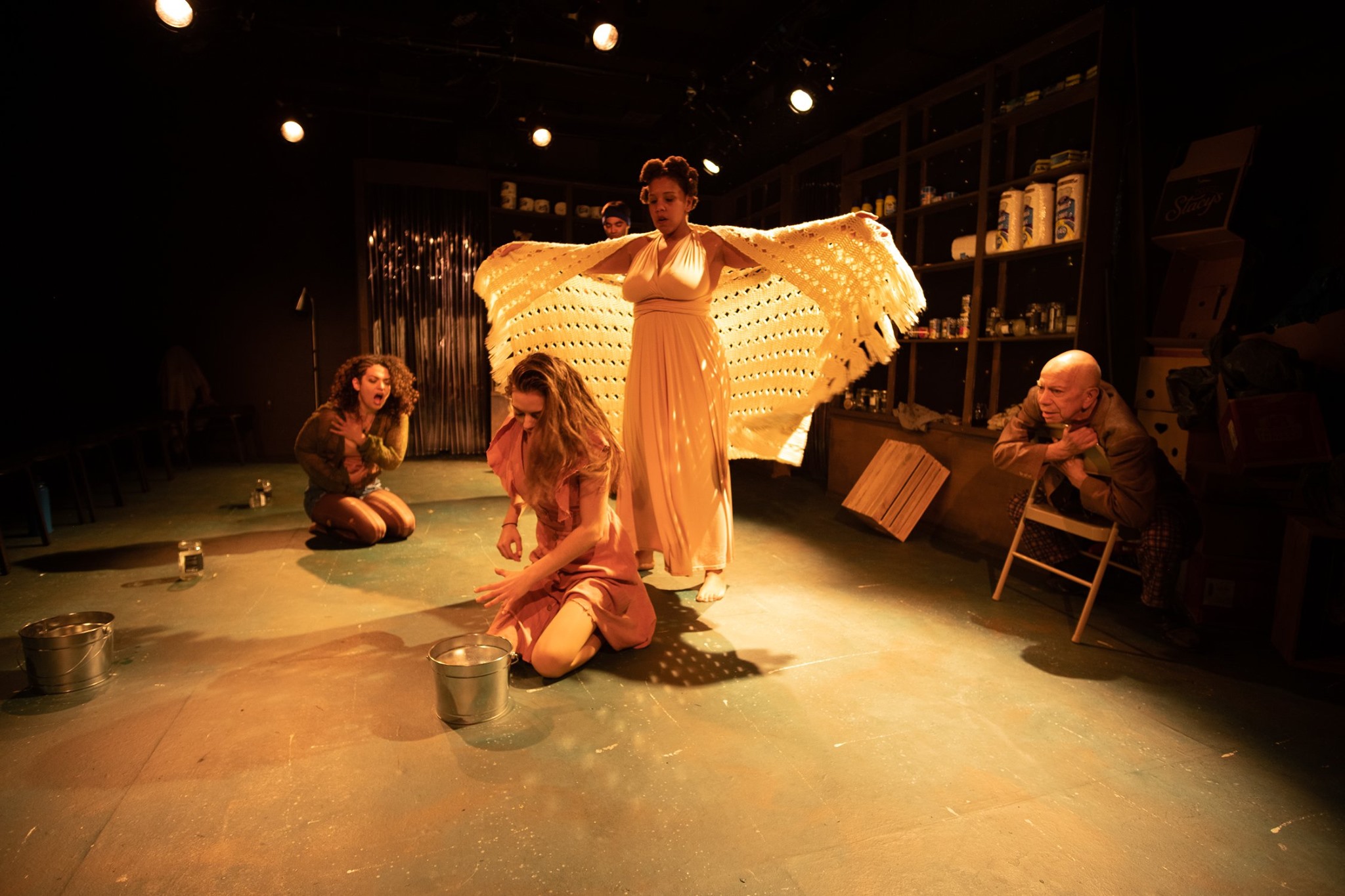I hesitate to say that HURRICANE SLEEP comes on like an approaching storm, but that, in truth, is what happens. Andrea Goldman’s play (co-directed by Julia Watt) starts slow, builds, and sweeps through in bands, with an eye at the center. There’s the first band, when we’re introduced to Ome (Neysa Lozano), holed up in a New York bodega during Hurricane Sandy; and the second, when Sal (Rachel Schmeling) comes in to pilfer supplies from a seemingly unattended store; and more follow. Styles change at each spoke of the storm, naturalist drama, memory play, dreamscape, and ritual; acting, dance, and chant.
Strangers of different backgrounds put together and unable to leave is implicitly dramatic. If there are tensions, they build. If there is affinity, it grows. If there is conflict, it is forced to resolution. In Hurricane Sleep, there is subtler dynamic; the slow simmer of identities; the discovery of self in apprehension of the other; questions asked and not necessarily answered. There is time for drama, true, but also in that time, the space to explore and get-to-know. Time creates space, and in the circularity of the storm, with its eternally recurring bands, it is one of ritual.
What happens between Ome and Sal is under the influence of ayahuasca, an hallucinogen known to bring figures from the past into the present, turn memory into prophecy. Spirits appear, the ghost of Ome’s mother (Heaven Stephens) the ancient Señor (George Bass), with his incantatory, bilingual wisdom. Another figure (Shashwat Gupta) appears too, a link to the normal, yet in his own way tenuous and surreal.
The young women are summoned, as the storm is heard outside, to ritual. When the wheel spoke turns to movement theater, they turn to dance and sink to the floor. Schmeling’s articulate figures (one suspects a dance background) contrast with Lozano’s grounded (more actorly) physicality; it reflects a deeper pull, not of opposites, but of differences. Hurricane Sleep is not dogmatic as to what they discover; it enters, rather, a zone in which discovery is possible.
It’s impossible not to associate the storm’s eye with the ritual center and to connect that with a way of seeing. Or being looked at. I wondered if this isn’t a motif for the Box Collective: the other of their shows I have seen was a pastiche of Shakespeare performed in a circle in which the main actors descended to the floor to enact a dance of gender identity. Sara Fay George, its creator, dramaturg and movement director for the current production, has crafted something similar here.
Sometimes I wanted the wind to howl more fiercely, and I yearned for water to drench someone’s hair or be tracked inside. A play as elemental as Hurricane Sleep invites a touch of the real thing. And though the slow start pays off, it is, for a time, “slow.” But the production is bold to walk the boundary between lulling and trance, and we like Ome and Sal are caught in the eye, and called to dream, sister and brother to both memory and prophecy.
The Box Collective’s HURRICANE SLEEP plays at IATI through May 12. Click here for tickets and information.
